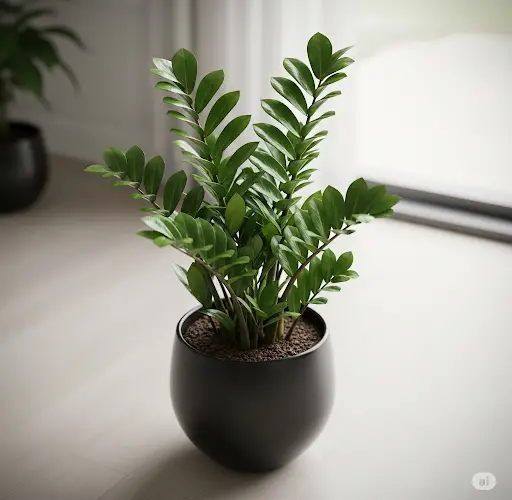The ZZ plant (Zamioculcas zamiifolia), also known as the Zanzibar Gem, is celebrated for its glossy leaves and resilience. Native to Eastern Africa, this plant can adapt to various indoor conditions, making it a favorite among both novice and experienced gardeners. While ZZ plants are known for their slow growth, with the right care, they can develop robust root systems, thick rhizomes, and an abundance of new leaves.
Understanding ZZ Plant Growth
ZZ plants grow from thick, potato-like rhizomes that store water and nutrients, allowing them to withstand periods of neglect. Under optimal conditions, they can produce new shoots that grow upward at a rate of up to 6-12 inches (15-30 cm) every month, typically generating 6-8 new stems in a single growing season .
Optimal Conditions for Vigorous Growth
To encourage your ZZ plant to outgrow its pot and flourish, consider the following care tips:
-
Light: Place your ZZ plant in bright, indirect light. While it can tolerate low light, brighter conditions promote faster growth .
-
Watering: Allow the soil to dry out between waterings. Overwatering can lead to root rot, while underwatering may slow growth.
-
Soil: Use a well-draining potting mix, such as one formulated for succulents or cacti, to prevent water retention .
-
Temperature: Maintain indoor temperatures between 65-85°F (18-29°C). Avoid placing the plant near cold drafts or heating vents.
-
Humidity: ZZ plants are adaptable to various humidity levels but thrive in moderate humidity.
Natural Fertilization for Enhanced Growth
While ZZ plants don’t require frequent fertilization, providing nutrients during the growing season can stimulate growth. A balanced liquid fertilizer diluted to half strength, applied once a month during spring and summer, is effective .
For a natural alternative, consider using compost tea or a homemade solution of diluted fish emulsion. These organic options supply essential nutrients without the risk of chemical buildup.
Encouraging Root and Rhizome Development
To promote the development of a dense root system and robust rhizomes:
-
Repotting: Repot your ZZ plant every 2-3 years or when it becomes root-bound. Choose a pot that’s 1-2 inches larger in diameter than the current one to provide space for growth .
-
Division: During repotting, you can divide the rhizomes to propagate new plants. Ensure each division has at least one healthy stem and a portion of the rhizome .
Stimulating Leaf Growth
Healthy leaves are a sign of a thriving ZZ plant. To encourage lush foliage:
-
Cleaning: Wipe the leaves with a damp cloth to remove dust, allowing for better photosynthesis .
-
Pruning: Remove yellowing or damaged leaves to direct the plant’s energy toward new growth.
-
Light Exposure: Ensure the plant receives adequate light, as insufficient light can lead to leggy growth and fewer leaves.
Monitoring for Pests and Diseases
ZZ plants are relatively pest-resistant but can occasionally attract mealybugs or spider mites. Inspect your plant regularly and treat infestations with insecticidal soap or neem oil. Also, watch for signs of root rot, such as yellowing leaves and mushy stems, often caused by overwatering .
Conclusion
With proper care, your ZZ plant can thrive, developing a dense root system, robust rhizomes, and abundant foliage. By providing optimal light, watering appropriately, ensuring good soil conditions, and offering occasional natural fertilization, you can enjoy a vigorous and healthy ZZ plant that enhances your indoor space.



